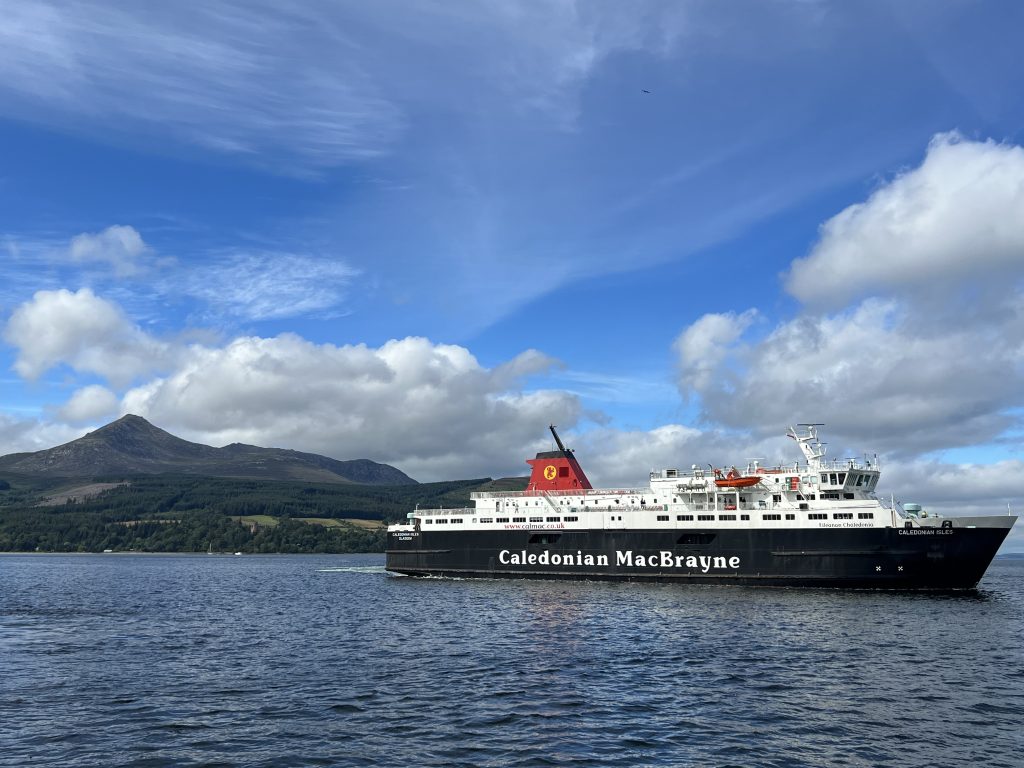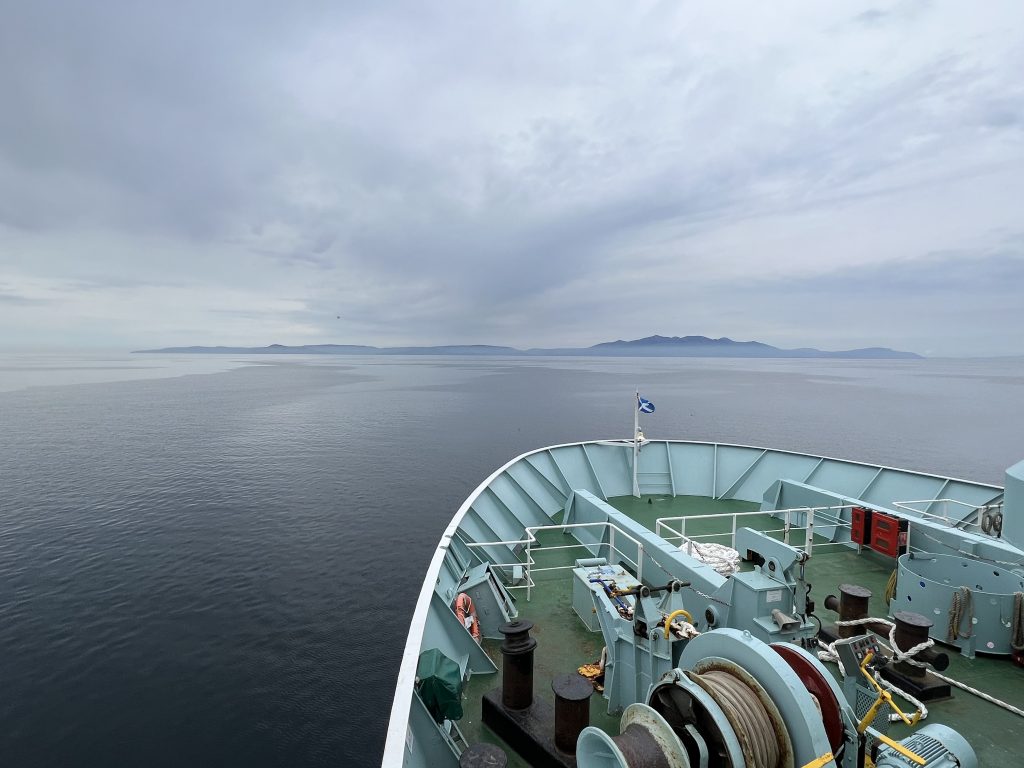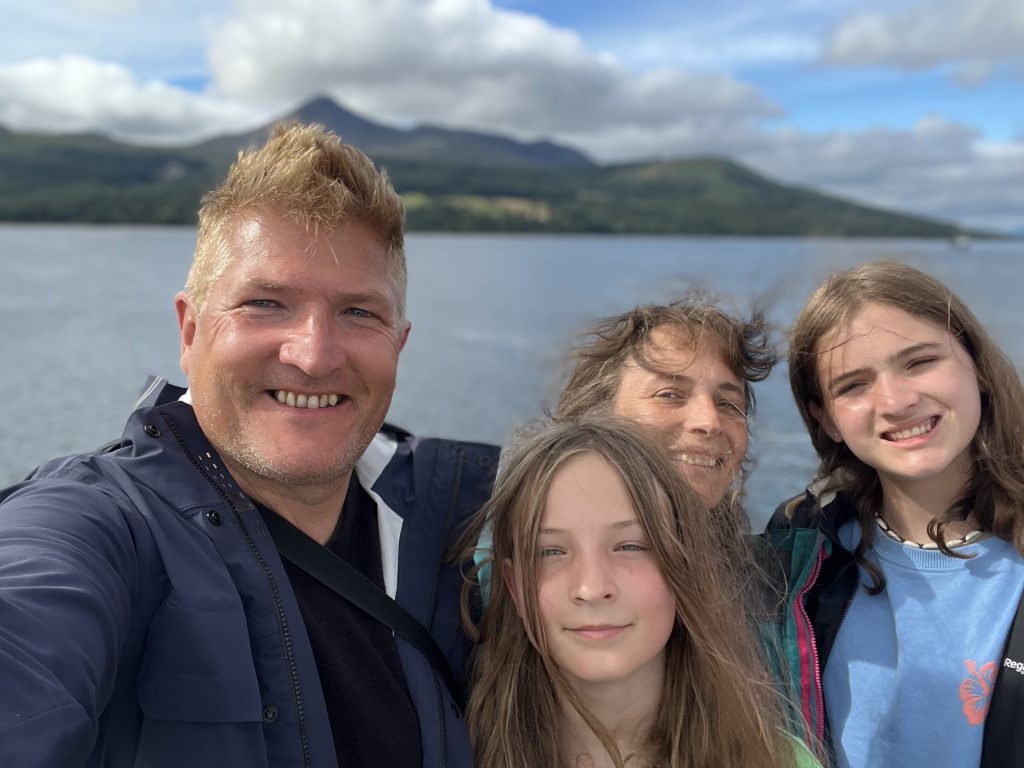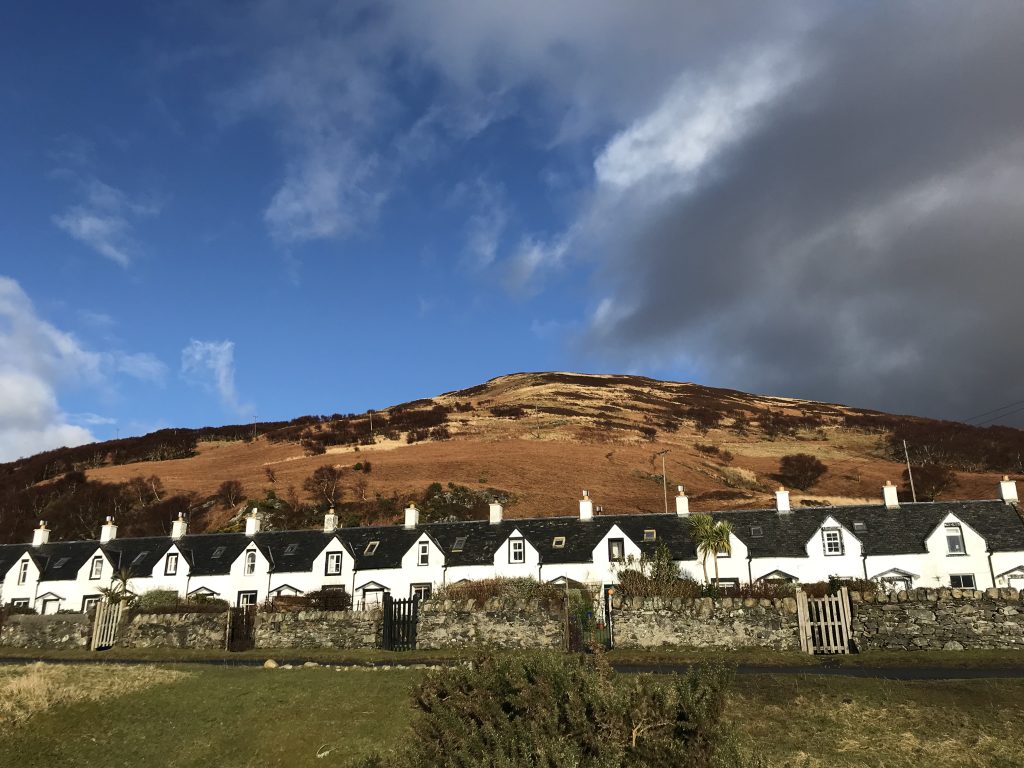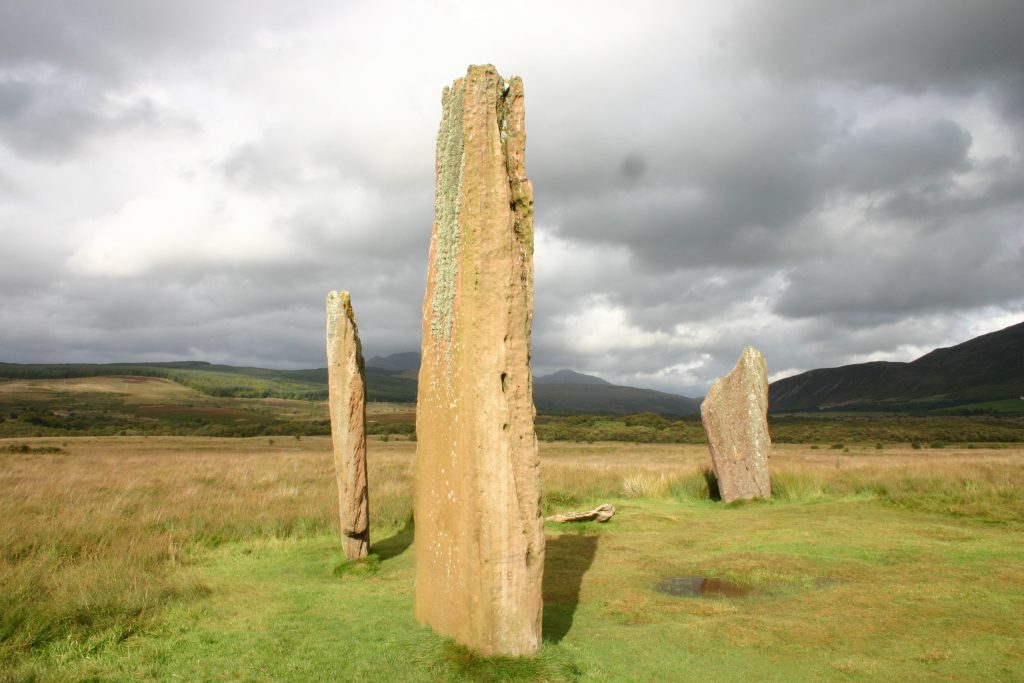By Robin McKelvie
Scotland’s west coast and its treasure trove of islands are a deeply dramatic landscape that bursts with stories; a land where legends live and heritage breathes through the written and spoken word. I’ve toured dozens of Scottish islands delving into their rich tales and I’m delighted to see so many of them appear on the COAST website. There are myriad stories sprinkled throughout the littoral and the Hebrides, and also in the Firth of Clyde, where you might not expect to hear them so much. It is here we head now to Arran, Scotland’s seventh largest island, a wild and wildly scenic escape where stories burst from the hills, glens, rivers and, most evocatively, the coast.
I’ve got a personal connection with Arran as my mum and dad sailed me doon the watter every summer as a kid. Indeed my second novel kicked off with a dramatic murder on the Arran ferry. It was more of a novella as it was under 100 pages, but it impressed my teachers anyway as I was still in school!
Arran inspires me as it has inspired countless souls down the centuries. I’ve got relations on the isle and I’m always amazed talking to people how much stories are very much part of the living culture. I’ve just been back over with my family delving into some of the COAST collations from Arran.
We kick off our look at the bountiful stories on Arran in the Highland north, a landscape of rugged mountain, sweeping coast and soaring eagles. Arran Geopark tell the tale of ‘Hutton’s Uncomformity’, the rock outcrop here at Newton Shore at Lochranza. I love visiting, thinking how in 1787 James Hutton, the ‘father of modern geology’, used it to prove his ground-breaking geological theories. He found one strap of rock 550 million years old, the other 200 million years younger, in what became known as the ‘unconformity’. It totally challenged the existing wisdom of the time – some then felt then the world was only 6,000 years old!
Human heritage emerges in W.M Mackenzie’s The Book of Arran, History and Folklore. ‘The Wee Folk on the Hill’ tells of two brothers, Jock and Rab, who were cutting peat above Lochranza. They heard mysterious voices singing “Monday, Tuesday, Monday, Tuesday, Monday, Tuesday…” . Jock joined in and amazingly the peat started cutting itself and moving off to Lochranza. I’ve had a go at cutting peat myself so I appreciate this story as it’s backbreaking work. And the tale does not end well for one of the cutters as you’ll see when you read it.
Pushing around to Arran’s West coast another great tale emerges through the Isle of Arran Heritage, The Arran High School Project. Many visitors don’t realise that the baleful Highland Clearances ripped through Arran. The ‘12 Apostles of Old Catacol’ delves into the period when all the land between the Golach and Alt na Mara burns was given as a dowry to the daughter of Lord Douglas Hamilton. The crofters were forced off their traditional land into the new houses you see in the village today, with the plan to force them into new jobs fishing. Many of the dispossessed couldn’t adjust to their new lives and drifted away, with the houses sitting abandoned for years. Visit today and you can see that each of the whitewashed ‘apostle’ cottages has a different shape of window, so when a candle was lit the fishermen could be guided back home.
In the Gaelic of Arran by Nils Magnus Homer we learn the story of ‘Creag na h-Iolarach’ (the Eagle’s crag), which centres on the crag above the village of Pirnmill. Mairi, a local woman, was harvesting oats when to her horror her child was snatched by an eagle and dragged back to its eyrie. I always see golden eagles in the crags when I visit Arran so this one really hits home. I shared it with my own daughters, but only as there is a happy ending with the child saved by a rescue party!
On a much lighter note further down the west coast we come to Dougarie and ‘The Butler Brings Some News’, where Wyllie Hume tells of his grandparents, who both worked at the estate and lived there with their nine children. His grandfather responded to reports that a son of an important guest of the Duke and Duchess had been tipped in the water by local boys – he was worried it could spell big trouble. He only realised afterwards one of the roughed up boys was the future Prince Rainier of Monaco, who later married marry Grace Kelly. It all turned out ok in the end but here overlooking the Kilbrannan Sound I can almost feel his panic!
A sadder tale on this coast, as told by Wyllie Hume again, ‘Leaving Arran for War and Heaven’, features an open coffin being floated across the same waters, but also war heroics and survival against the odds: it really caught my imagination – check it out here. Another evocative tale swirls around ‘The Stone Circles of Machrie Moor’. These stone sentinels rising from the moor in the Shiskine Valley stretch back through time over 4,000 years. I didn’t know until I dipped into COAST that there are Vikings legends attached – which added a whole extra element for my two daughters, who were with me.
We switch coast now and hop over to Arran’s glorious east coast for ‘A Turtle Tale’, told by Arran resident Mary Adams. This one got my girls excited – the COAST stories touch readers on so many levels – as it involves sighting a Leatherback Turtle in the waters off Sannox. We went in snorkelling here, and my kids were scanning out for turtles! In a surreal twist you can still see the turtle spotted by Mary in a museum in Glasgow. Interested? Read on… Water of a different kind features in Arran resident Alison Page’s ‘Corrie’s Curling Capers’; frozen water that is. Did you know curling was even ever played on Arran? I didn’t. Read on to hear about a match between Brodick and Lamlash.
Also on the east coast other glorious tales are titled ‘Dad was a vet on Arran’ and the ‘Giant Scorri’ and ‘Taking Cows to the Mainland’. One that really caught my eye is ‘Caught in the Act’ in Arran Water: An Island Whisky History, by Greg Adamson, which harks back to the days of illicit stills that pre-date the brace of wondrous distilleries you can visit today. Another tale from the same book– ‘Pursuing Smugglers around the Coast’ – is a racy one depicting the colour of the days when Her Majesty’s Revenue cutters bashed around this coast playing cat and mouse with the smugglers.
Dipping into Arran’s south – this is an island alive with stories everywhere you look – we have ‘Killed for Smuggling Whisky’, a real life tragedy that took the lives of a local and a father and his son – you can still make a pilgrimage to the graves in Kilmory Cemetery. Staying on a maritime theme ‘The Story of the Arran Lighthouses’ illuminates in every way a lighthouse I’ve long been fascinated by one on the offshore Isle of Pladda. As well as the one on Holy Isle I took a trip around on one of the new sailings with Lamlash Cruises.
We sailed away from Arran this time with a deeper knowledge of the island and a deeper appreciation for the layers of culture that are forged through the ancient rock of this beguiling island. We said goodbye to those brooding Arran Hills, our heads and hearts alive with romance, tragedy and hope. I thoroughly recommend on your next Arran adventure reading up on some of the COAST stories and exploring the locations that help bring them alive.
